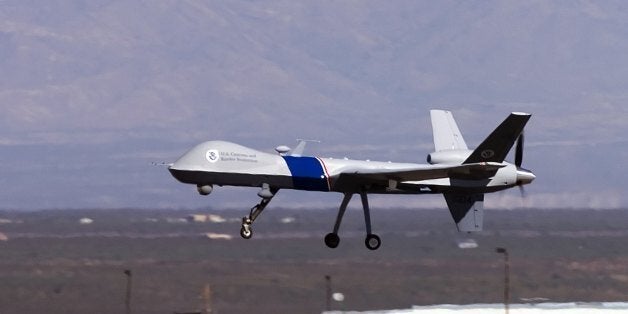
An expensive fleet of border drones is largely useless and costs five times as much to fly as the U.S. Customs and Border Protection claims they do, a blistering inspector general report released Tuesday found.
The agency's nine Predator drones are such "dubious achievers" that the agency should shelve its $443 million plan to buy more of them, said the report's author, Department of Homeland Security Inspector General John Roth.
"We see no evidence that the drones contribute to a more secure border, and there is no reason to invest additional taxpayer funds at this time," he concluded.
Customs and Border Protection launched its drone program eight years ago with high hopes and lofty promises. The division of the Department of Homeland Security claimed its drones would fly 24 hours a day and save money compared with the manned airplanes it already operated.
But instead the drones flew only 22 percent of a reduced goal of 16 hours a day. Sending the vehicles airborne cost at least $62.5 million a year -- a whopping $12,255 per hour. That was five times what the CBP claimed the drones cost, because it did not calculate expenses such as pilots or equipment.
The results from the pricey drone program were wildly underwhelming. In Texas, the drones helped catch 111 of the 154,453 people apprehended for illegally crossing the border. In Arizona, they were involved in 1.37 percent of marijuana seizures.
CBP did not immediately respond to a request for comment from HuffPost. But in a letter responding to the inspector general report, agency Assistant Commissioner Eugene Schied wrote that "there have been countless successful CBP missions over the years."
Schied said the agency had not been able to fly the drones as much as it would have liked given "funding decreases." He said that while not all border apprehensions and seizures might be directly attributable to the drones, they had helped provide critical "situational awareness."
The agency issued a plan in 2012 to spend nearly half a billion dollars on new drones that has never been formally abandoned. It signed a deal for the drones with Predator maker General Atomics that year despite an earlier, critical inspector general report.
But CBP's Schied said that beyond replacing a Predator that crashed in the Pacific Ocean in January 2014, "There is no intent at this time to acquire additional (drones)."

